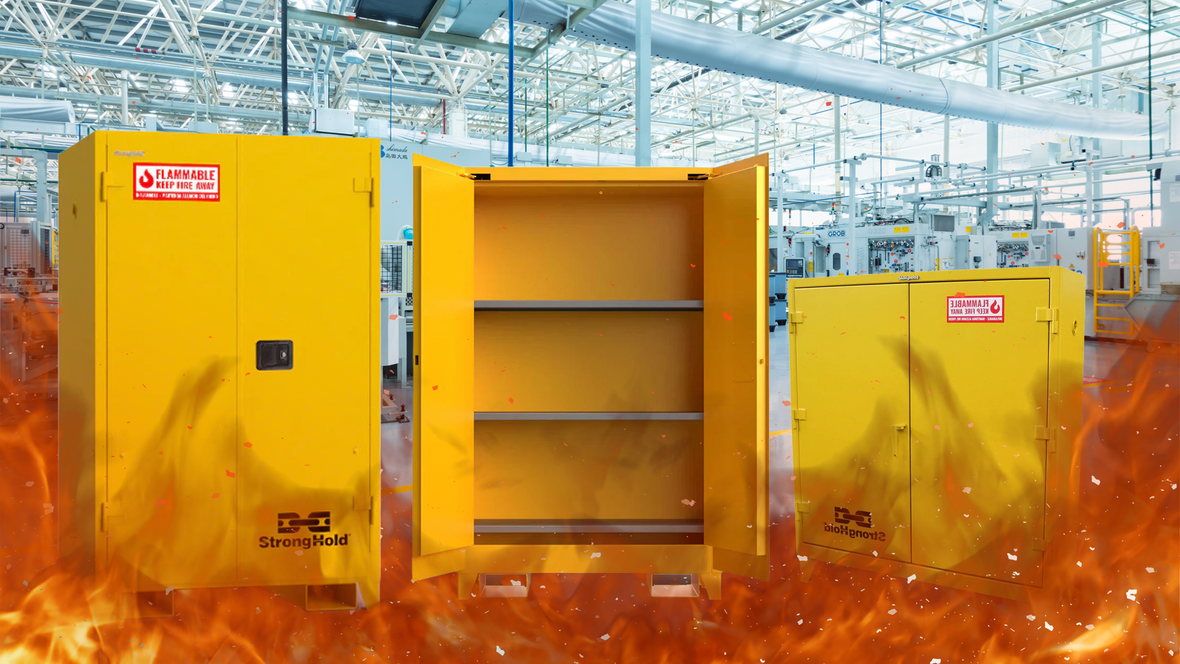
Enhancing Safety in Manufacturing: The Crucial Role of Regulatory Approved Flammables Safety Cabinets
Vinny Camma
Introduction:
In the fast-paced world of manufacturing facilities, prioritizing safety is non-negotiable. One often underestimated yet crucial element in ensuring workplace safety is the utilization of flammable safety cabinets. These cabinets play a pivotal role in mitigating the risks associated with flammable liquids, fostering a secure working environment. In this blog post, we will delve into the reasons why flammable safety cabinets, such as those from Heavy Duty Cabinets, are indispensable in industrial facilities.
Containment of Flammable Liquids:
Flammable safety cabinets are purpose-built for the safe containment and storage of flammable liquids. These cabinets must boast a robust construction and adhere to stringent safety standards. This ensures a controlled environment for storing substances that pose a fire hazard, preventing potential accidents by limiting the spread of flammable materials within the facility.

Fire Prevention and Protection:
The flammable safety cabinets available at Heavy Duty Cabinets are designed with a focus on fire prevention and protection. Features such as double-walled construction, fire-rated insulation, and self-closing doors contribute to minimizing the risk of fire spreading beyond the cabinet. This not only protects personnel but also safeguards valuable assets and equipment, reinforcing the commitment to a secure working environment.
Compliance with Regulations:

These heavy-duty cabinets, as highlighted by Heavy Duty Cabinets, are OSHA, FM, and NFPA code 30 approved for flammable safe storage. This means that the cabinets adhere to the safety standards set by the Occupational Safety and Health Administration (OSHA), Factory Mutual (FM), and the National Fire Protection Association (NFPA) Code 30. Compliance with these codes ensures that manufacturing facilities remain in line with local, state, and federal safety standards, emphasizing the importance of responsible and accountable practices within the organization.
Unconventional Uses:
In addition to their primary role in hazardous material storage, flammable safety cabinets exhibit versatility in unconventional applications, showcasing their adaptability in diverse industrial scenarios.
- Document Storage: With adjustable shelving and secure locking mechanisms, flammable safety cabinets can be repurposed for the safe storage of important documents. This unconventional use ensures that critical paperwork remains protected from fire and environmental hazards.
- Electronics Storage: Flammable safety cabinets can provide a safe haven for electronic components, especially those sensitive to temperature and humidity. The climate-controlled environment within the cabinets helps prevent damage to electronic equipment, extending their lifespan.
- Personal Protective Equipment (PPE) Storage: Heavy Duty Cabinets' flammable safety cabinets can serve as dedicated storage spaces for specialized personal protective equipment. This ensures that PPE is readily accessible and well-maintained, contributing to a culture of safety among workers.
- Medical Facilities: Flammable safety cabinets can find utility in medical facilities for the safe storage of certain pharmaceuticals and medical supplies. The cabinets' secure and controlled environment ensures the integrity and safety of these materials, aligning with the stringent standards required in healthcare settings.
Conclusion:
Flammable safety cabinets, such as those available at Heavy Duty Cabinets, stand as essential assets in manufacturing facilities. Their robust construction, commitment to regulatory compliance, and adaptability in unconventional uses, combined with OSHA, FM, and NFPA approval, make them a cornerstone in promoting workplace safety. Investing in these cabinets not only protects personnel and assets but also reflects a dedication to creating a secure, compliant, and responsible work environment in the industrial landscape, extending their utility to critical areas such as medical facilities.



